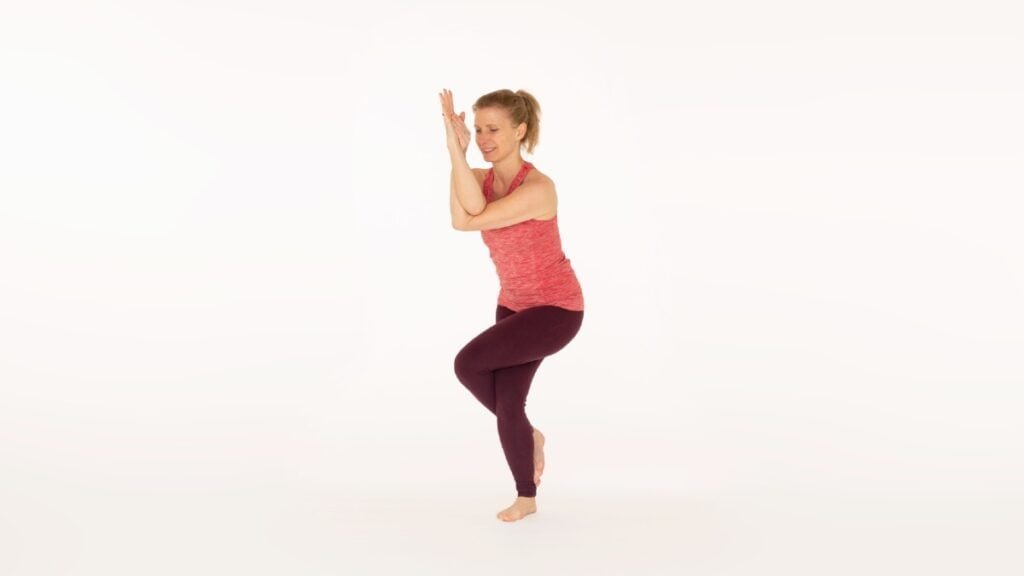Garudasana Yoga: Find Balance and Unleash Inner Strength with Eagle Pose
Table of Contents
Introduction
Garudasana Yoga, also known as Eagle Pose, is a dynamic and powerful yoga posture that symbolizes strength, focus, and grace. Derived from the Sanskrit words “garuda” (meaning eagle) and “asana” (meaning pose), Garudasana invites practitioners to embody the majestic qualities of an eagle as they navigate the intricacies of this balancing pose.
In this article, we will explore the steps, benefits, variations, and precautions associated with Garudasana, empowering you to incorporate this empowering pose into your yoga practice.
How to Perform Garudasana Yoga
To practice Garudasana Yoga, follow these step-by-step instructions:
Step 1: Begin in a standing position with your feet hip-width apart and your arms by your sides.
Step 2: Shift your weight onto your left foot and slightly bend your left knee.
Step 3: Cross your right thigh over your left thigh, wrapping your right foot around your left calf if possible. If it’s challenging to wrap your foot, simply rest your right toes on the ground beside your left leg.
Step 4: Extend your arms forward at shoulder height and cross your left arm over your right arm, bringing your palms to touch. If reaching your palms is difficult, you can also bring the backs of your hands together.
Step 5: Gently press your palms or the backs of your hands together, keeping your elbows lifted.
Step 6: Find a focal point in front of you and maintain your gaze to help with balance.
Step 7: Engage your core and maintain a steady breath as you find your balance in the pose.
Step 8: Hold Garudasana for 5-10 breaths, or as long as feels comfortable and stable.
Step 9: Release the pose by slowly unwinding your arms and legs, returning to a standing position.
Step 10: Repeat the pose on the opposite side, crossing your left thigh over your right thigh and your left arm over your right arm.

Benefits of Garudasana Yoga
Regular practice of Garudasana Yoga offers a range of physical, mental, and energetic benefits, including:
a. Improved Balance and Stability: Garudasana strengthens the muscles in the legs, ankles, and feet, promoting better balance and stability both on and off the mat.
b. Increased Flexibility: This pose opens the shoulders, upper back, and hips, increasing flexibility and range of motion in those areas.
c. Improved Concentration and Focus: The intricate nature of Garudasana requires focus and concentration, helping to enhance mental clarity and improve overall focus.
d. Strengthened Leg Muscles: The position of the legs in Garudasana activates and strengthens the muscles in the thighs and calves, promoting leg strength and endurance.
e. Enhanced Joint Mobility: Regular practice of Eagle Pose helps to improve joint mobility in the ankles, knees, and shoulders, reducing the risk of injury and supporting healthy joint function.
f. Energetic Alignment: Garudasana promotes the flow of prana (life force energy) throughout the body, aligning the energy centers and creating a sense of vitality and balance.
Variations of Garudasana Yoga
Explore these variations of Garudasana Yoga to modify the pose according to your level of practice and comfort:
a. Seated Garudasana Yoga: If balancing in the standing position is challenging, you can practice Garudasana in a seated position. Sit on a mat with your legs extended in front of you, and cross your right thigh over your left thigh, placing your right foot around your left calf. Cross your arms at the elbows, bringing your right elbow under your left elbow, and press your palms or backs of the hands together.
b. Modified Garudasana Yoga: If it’s challenging to wrap your foot around the calf, you can simply rest your right toes on the ground beside your left leg or use a yoga block for support.
c. Extended Garudasana Yoga: After crossing your arms and legs in Garudasana, try extending your top leg forward and your bottom arm forward, creating a deeper balance challenge.
Precautions and Contraindications
While Garudasana is generally safe for most practitioners, it’s important to consider the following precautions:
a. Avoid practicing Garudasana if you have any recent or chronic knee, ankle, or hip injuries. If you have concerns or limitations, consult with a healthcare professional or an experienced yoga instructor before attempting this pose.
b. Individuals with high blood pressure, migraine headaches, or shoulder injuries should approach this pose with caution and modify as needed.
c. If you experience any pain, discomfort, or dizziness during the pose, gently come out of it and reassess your alignment and stability.
Conclusion
Garudasana, the Eagle Pose, is a dynamic and empowering yoga posture that cultivates balance, strength, and focus. Regular practice of this pose improves balance, flexibility, and concentration while strengthening the legs and promoting joint mobility. Embrace the majestic qualities of an eagle as you soar into Garudasana, finding equilibrium between effort and ease. Approach this pose with patience, mindfulness, and a sense of adventure. Allow Garudasana to ignite your inner strength and grace, empowering you both on and off the mat.





